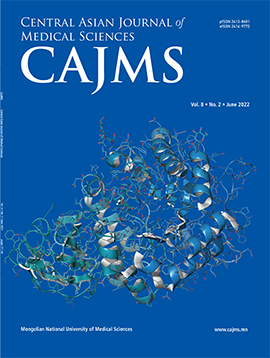Air Pollution as a Slow-Onset Disaster in Ulaanbaatar
DOI:
https://doi.org/10.24079/cajms.2019.12.010Keywords:
Air Pollution, Ulaanbaatar, Children’s HealthAbstract
Objectives: This research aimed to better understand how exposure to high levels of winter air pollution may be affecting the health of children living in areas where housing is predominantly ger type traditional homes and houses compared to those living in areas where housing is predominantly apartments in Ulaanbaatar. The objective of the research was to study the differences in health and missed school days in children from these areas. Methods: Data were gathered from 36 childcare centers (kindergartens), schools and primary centers and interviews conducted among 148 individuals in three districts of Ulaanbaatar namely Chingeltei, Songinokhairkhan and Khan-uul. The study was performed between October 1, 2015 and December 31, 2015. Results: This study revealed that at the beginning of the study, the rate of children reported to be sick was about the same for both ger and apartment district primary schools, however by the end of the study the number of children reported sick each day living in predominantly gers and cabins was more than reported in apartment districts, that is, about 4 per 10,000 in apartment districts vs about 7 per 10,000 in ger districts. At the end of the study, rates of sickness reported was 5 to 6 times higher in children in childcare centers compared to children attending in primary schools regardless of where they lived. Conclusion: This study suggests that air pollution is not only affecting children’s health, but also affecting their education in Ulaanbaatar.
Downloads
269
Downloads
Published
How to Cite
Issue
Section
License
Copyright (c) 2019 Mongolian National University of Medical Sciences

This work is licensed under a Creative Commons Attribution-NonCommercial 4.0 International License.




